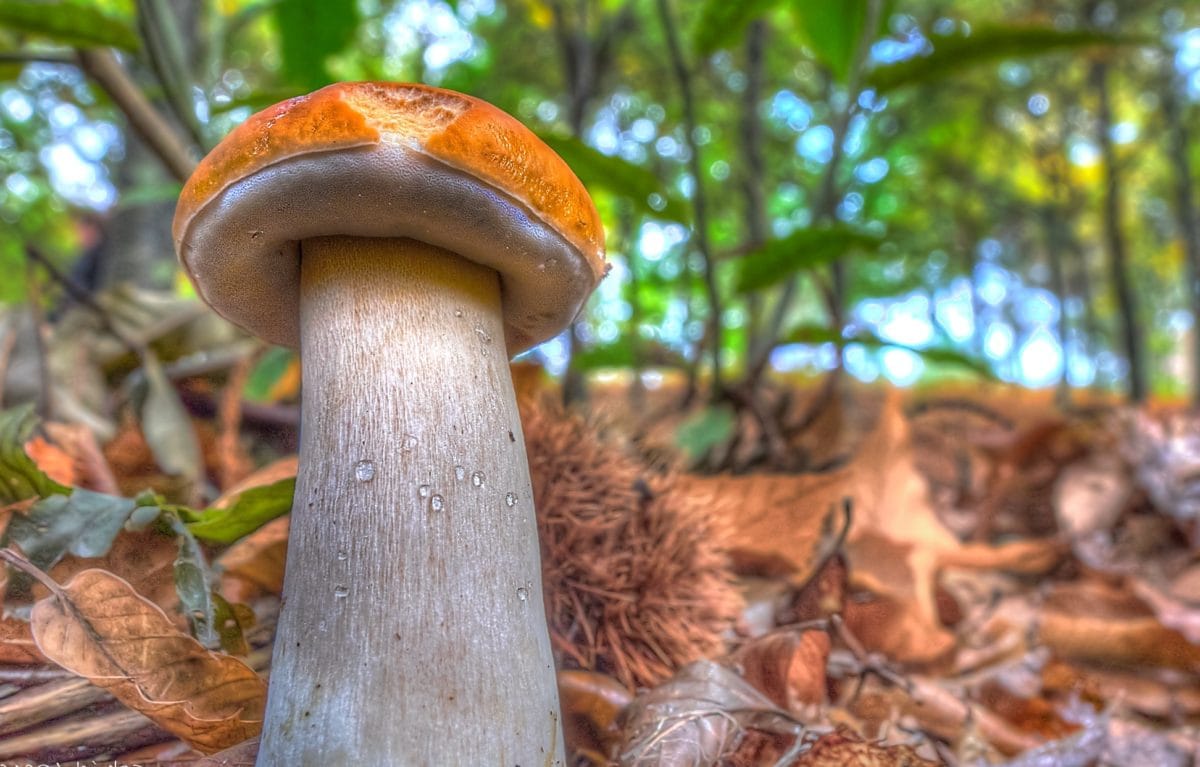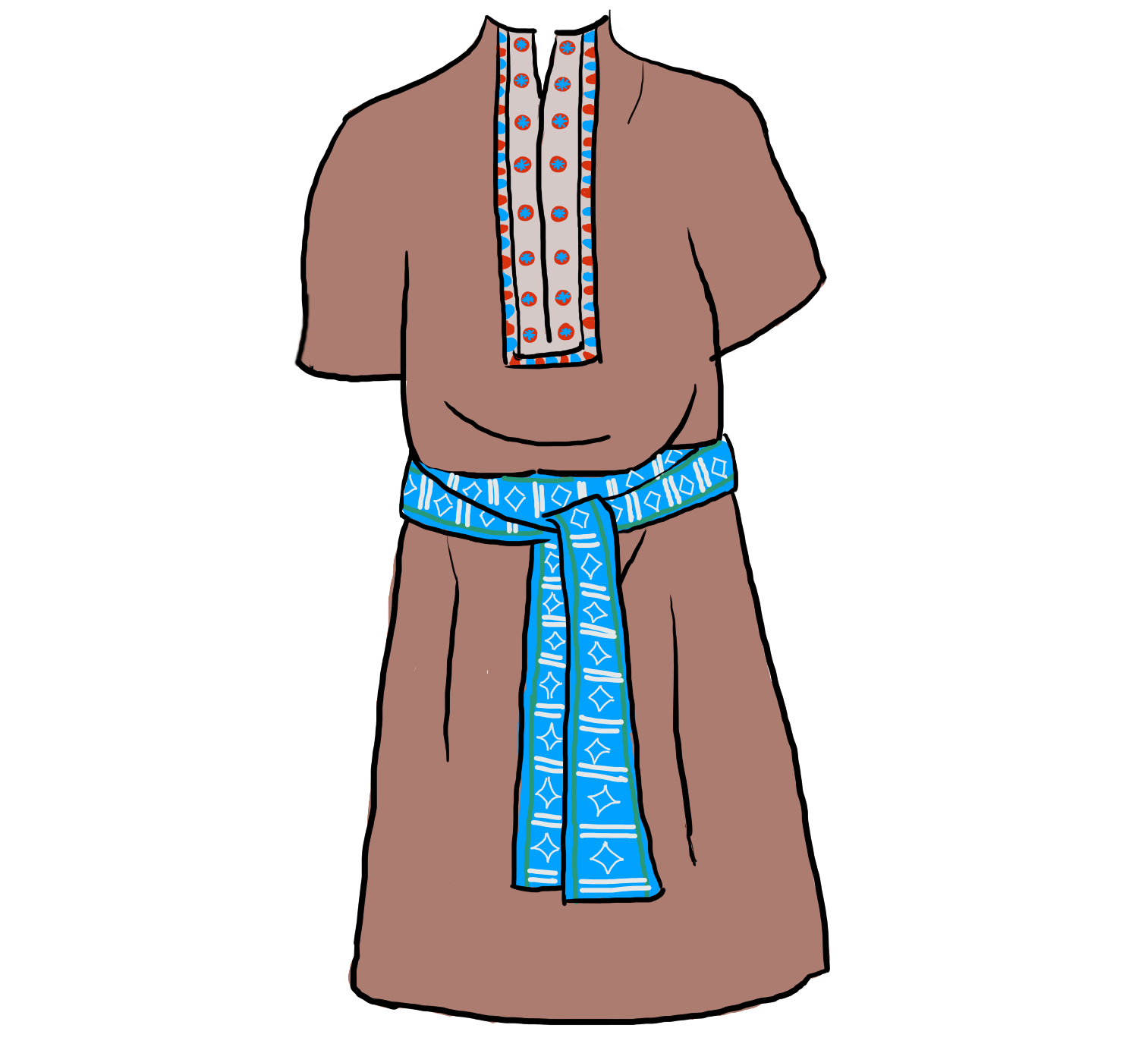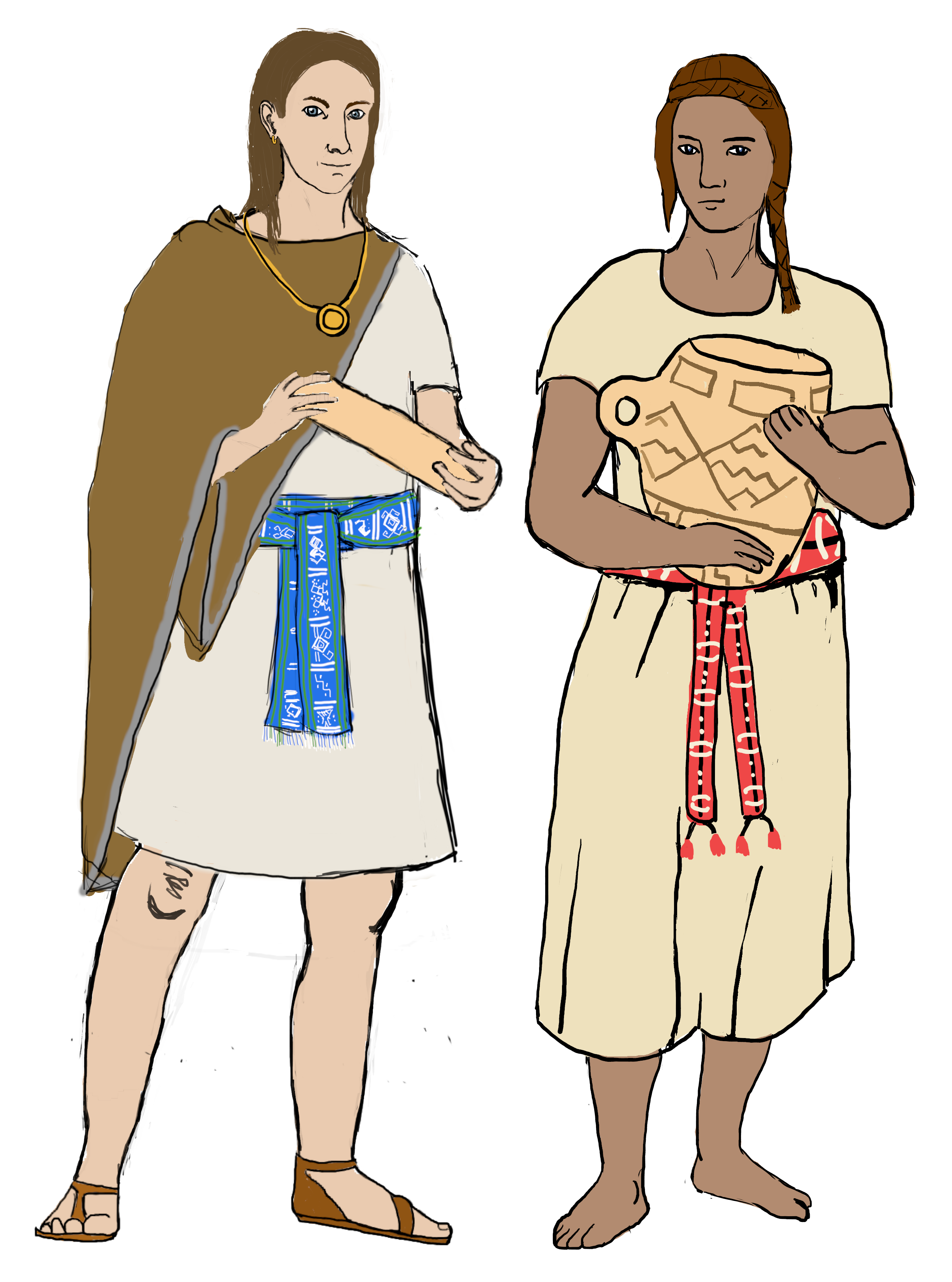Farens
Sama suomeksi täällä
The Farens are the major ethnicity of the Faren Lowlands region of the Southern Continent. Their native language is Nem. The largest Faren settlement, and the currently largest city on Salan is Fares (Silford) . The Farens are not one nation, but form multiple city states that are often in conflict with each other.
In most Faren city states, the population is divided into the commoners who do the manual work, and into the elite citizens who are educated craftsmen or rich farm owners. In addition the free workers, much of the population consists of slaves. Although majority of the city states are democratic, usually only the citizen class has the right to vote or gain positions in the government.
Nem is the main language of the Farens, in fact, faren or 'local people', is often defined as those peoples that speak Nem. Nem is also the most spoken language of the Southern Continent, and is often known by the surrounding peoples as well.
Nem is related to Aradal spoken by the Ara people living on the Serme Mountains.
The young of both genders usually have long hair. The adult males usually keep their hair short or mid-lenght and have a neatly trimmed beard, while the women have long elaborate hair styles. Both genders wear make-up, earrings and jewellery, but other piercings are uncommon.
It is also customary to find out straight away if you are related to a new aquaintance in some way, to make sure if you share any common ancestors with them.
Farens commonly recognise two genders, man and woman. The differences between genders are less pronounced than with the Zeribians. The dress, interests, education and professions are similar, and chosen rather based on social status than gender.
While all the ghosts dwell on Salan after their death, the Farens have developed the most in-depth relationship with these spirits. The dead are buried under the family home, and thus the ghosts are given a residence there. They take part in much of the day-to-day life of the family, joining family meals, meeting visitors and even negociating marriage deals.
Appearance
Most Farens have brown, slightly curly hair, but one might see light or even ginger hair on the people living further south. Their skin is usually light to mid-brown. Farens are generally notably taller that their mountain-dwelling cousins, the Ara people.Culture
Main article: Faren cultureLivelihoods & social classes
The main livelihoods of the Farens is agriculture. The main stable crop is wheat, although viniculture is also culturally important. The main farm animal is the goat, that produces meat, milk and wool, and is used for beast of burden. The peasant classes support a complex city-living class of craftsmen and traders, that produces the most of the wealth of the people.In most Faren city states, the population is divided into the commoners who do the manual work, and into the elite citizens who are educated craftsmen or rich farm owners. In addition the free workers, much of the population consists of slaves. Although majority of the city states are democratic, usually only the citizen class has the right to vote or gain positions in the government.
Language
Nennit nendan? Muskan Farensales ankeidan?
Nem is the main language of the Farens, in fact, faren or 'local people', is often defined as those peoples that speak Nem. Nem is also the most spoken language of the Southern Continent, and is often known by the surrounding peoples as well.
Nem is related to Aradal spoken by the Ara people living on the Serme Mountains.
Naming traditions
The Farens usually have only one name. Faren names are usually descriptive and adjectival names, such as Valin 'fair', Yán 'big' or Leite 'happy' are common. Names of plants and animals, such as Pásal 'rowan' or Saura 'seed', are also popular, especially on the West Island. Faren names are usually gender neutral. To differenciate between individuals, Farens use either patronyms or name of their homeplace. Thus a full name of a person could be Pásal Saurrit Çarimbandár 'Pásal (child) of Saura from Çarimbal'. It's common to primarily use the patronym of the same sex parent, or the parent that is predicted to be more well-known for the listener.Cuisine
The typical Faren diet consists mainly of grain, legumes and vegetables. Only the rich eat meat daily, preferring wild game, while the common people usually eat goat meat or fish. The typical beverage is either wine or beer depending on the area.
Due to the broad trade networks, the rich Farens have access to a wide variety of luxury food items grown both on the continent and the islands. Most important imported foods are spices, nuts and fruit.
Due to the broad trade networks, the rich Farens have access to a wide variety of luxury food items grown both on the continent and the islands. Most important imported foods are spices, nuts and fruit.
Farens love mushrooms that grow plentifully in the Lowland woods. Zeribians are horified by this custom, because they usually only use the tropical mushrooms on the Eastern Islands for poisons.
Dress code
Main article Faren clothing The most common Faren piece of clothing is a tunic. Short and long tunics are worn according to the weather, and higher class and women usually wear longer tunics. A skirt or a coat can also be worn over the tunic. Pants are usually avoided. The most common clothing materials are goat wool and linen. Zeribian Sea Silk is highly valued.
Farens enjoy bright colours when possible. Blue is worn for formal occasions, and teachers and counsil members wear yellow. Simple single-colour tunics are decorated with traditional woven belts. The type of the belt and it's patterns transmit information about the wearer's status and background.
Traditions
Common etiquette
When meeting, Farens greet each other by bringing both of their hands together, often accompanied by bowing. Between close friends it is common to either hug, or touch the hands and bring the foreheads together for a moment. Touching and physical closeness is common, even between different social classes and genders.It is also customary to find out straight away if you are related to a new aquaintance in some way, to make sure if you share any common ancestors with them.
Religion
Main article: Faren pantheonCourtship and marriage
The Farens usually marry only one partner, but open relationships are common. Marriages are often arranged by the family, but the couple also have a say in the matter. Divorse can be taken by both partners, but they have to compensate the left partner. They can and are encouraged to marry again. In the case of a divorce, children are usually divided by partners. It is common that a young married couple doesn't live together instantly. It is though that the young mother should live surrounded by her older female relatives at first, and only move once she and the newborn are safe. If they already have a house, the wife can temporarily move back to her family home. This tradition has lead to the houses often being inherited matrilinearly. Otherwise the inheritance system is mixed: the boys usually inherit from their father and girls from their mother.Sexuality and gender
In Faren culture bisexuality is the norm. It is common to pursue homosexual relationships in the youth, but then settle into a heterosexual marriage for producing children. Exclusive homosexuality is usually viewed as a bit childish, but is accepted. Same-sex marriages are accepted, but are not very common.Farens commonly recognise two genders, man and woman. The differences between genders are less pronounced than with the Zeribians. The dress, interests, education and professions are similar, and chosen rather based on social status than gender.
Birthdays
Main article: Birthdays on SalanFunerary customs
Main article: Faren funerary traditionsWhile all the ghosts dwell on Salan after their death, the Farens have developed the most in-depth relationship with these spirits. The dead are buried under the family home, and thus the ghosts are given a residence there. They take part in much of the day-to-day life of the family, joining family meals, meeting visitors and even negociating marriage deals.
Parent ethnicities
Diverged ethnicities
Encompassed species
Related Organizations
Related Items
Related Myths
Languages spoken
Related Locations
History
Famous historical people
Deremhos the Elder, the creator of the SkyswordsÁsinnár, a mythical hero
Daursan and Kauteirin, great heroes and the founders of Silford
King Elderoak the Mad
Ván of Sankai, a famous playwright and composer






A really interesting article! I especially liked the idea of a personal mug matching the family design, and how the views on eating mushrooms differ between cultures.
Creator of the Kaleidoscope System and the planet Miragia.
Thanks! The article is in a desperate need of editing though, when I have some spare time! If you are interested, I wrote a full article of mushrooms last summer (which I should have linked here too lol): https://www.worldanvil.com/w/salan-tuisku/a/mushroom-picking-ritual